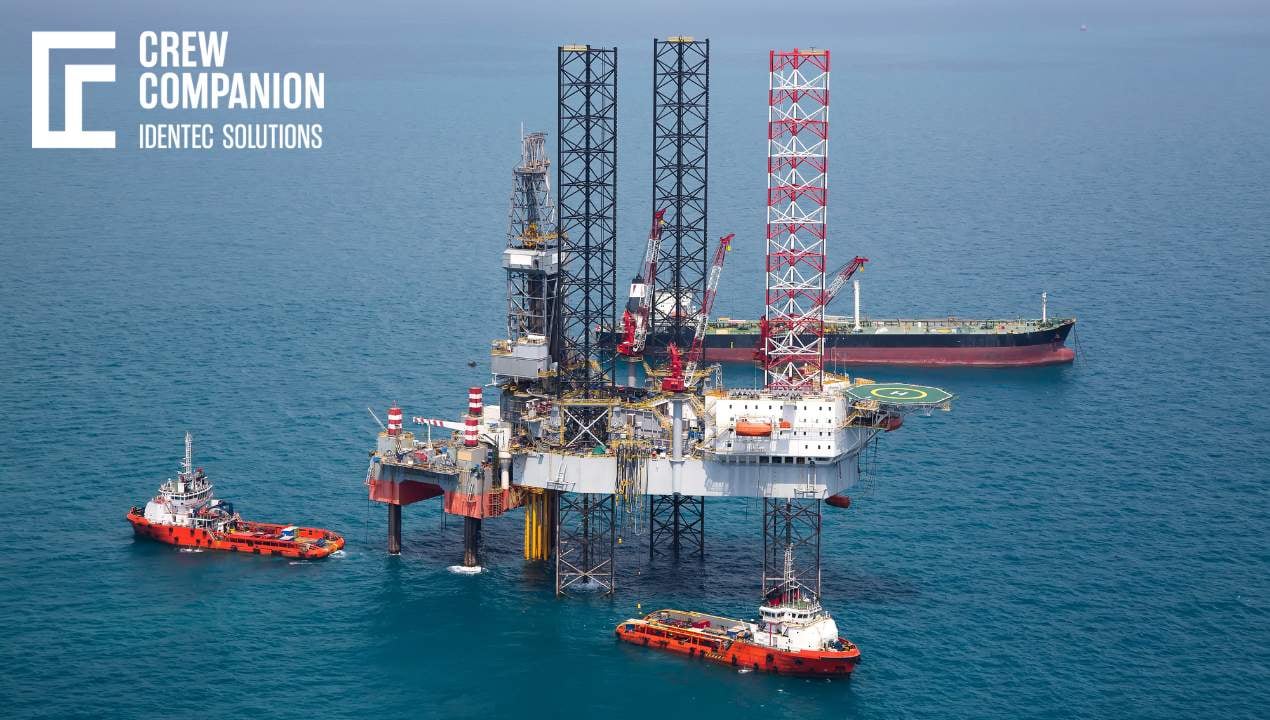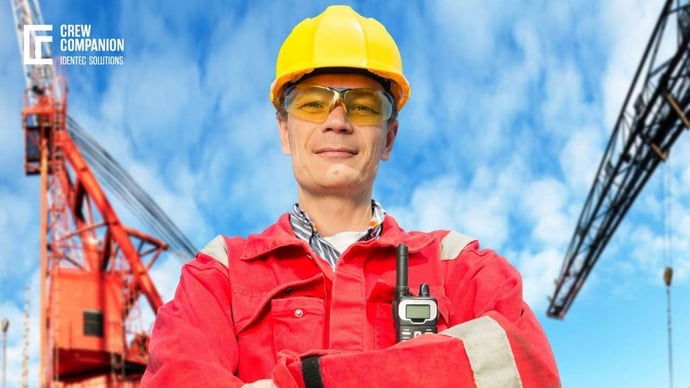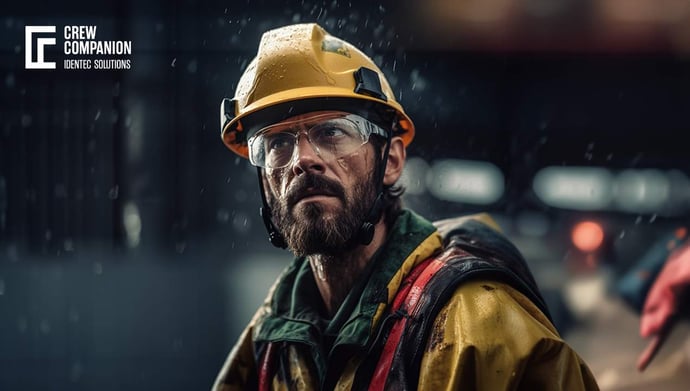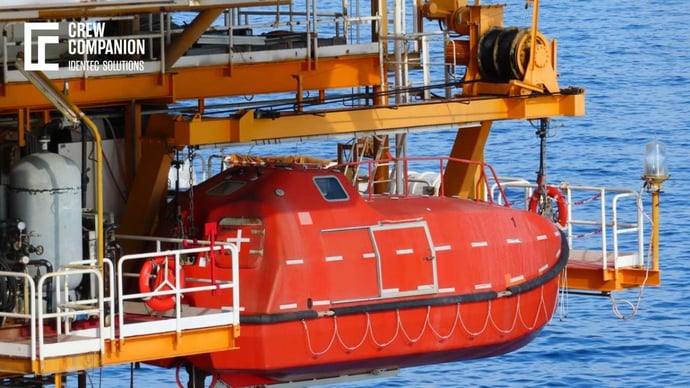Wind Farm Ships: How to Maintain a Proven Safety Record
| Written by Michal Wozniakowski-Zehenter
Wind farm ships, also referred to as SOVs, CSOVs, installation vessels or jack-up barges, are vital components in every single stage of life of offshore wind farms. These specially designed boats are essential for crew transportation, building, maintaining, and decommissioning wind turbines in some of the harshest ocean conditions. As the world's need for renewable energy keeps increasing, ensuring the safety of both the wind farm ships and their crew members becomes even more critical nowadays.
Operating on the highest level of efficiency and security for the vessels themselves and their crew while maintaining an excellent safety record in offshore daily duties is one of the most significant factors we will discuss in this article.

No video selected
Select a video type in the sidebar.
How to prepare wind farm ships as a safe workplace?
The backbone of successful wind farm ship operations consists of dedicated individuals who make it all happen. From crew members navigating through the harsh waters to technicians and engineers who maintain and repair complex machinery, each person undergoes comprehensive training to acquire the knowledge and skills required for their respective roles.
The training program covers various areas, including safety protocols, emergency procedures, and the operation of specialised equipment. By immersing themselves in these topics, all personnel gain a deep understanding of potential risks and effective mitigation strategies. They learn to identify and respond to emergencies in a split second, ensuring the safety of everyone on board (continue for more on emergency response training)
Regular drills and simulations further enhance their capabilities and preparedness. These exercises replicate real-life scenarios, allowing individuals to put their training into practice and refine their responses. Consequently, they become better equipped to handle unexpected situations that may arise during wind farm ship operations.
The focus on rigorous training and receiving certification goes beyond mere compliance with regulations. Wind farm ship operators understand that safety is not only a checklist item but a mindset that needs to be ingrained. By prioritising the continuous development of their personnel, they foster a safety culture that permeates every aspect of their operations.
This safety-conscious mindset is pivotal to the success of offshore wind farm installations. It ensures that all individuals involved, from the crew members stepping onto the ship to the engineers monitoring the complex machinery, approach their tasks with utmost caution and attention to detail. Consequently, the risk of accidents or incidents is significantly reduced, safeguarding both people and the environment.
FUNDAMENTALS – Standards and regulations
International standards and regulations cover a wide range of aspects, starting from the design and construction phases. Wind farm ships must meet specific guidelines and requirements to ensure their structural integrity and stability. Every detail, from material selection to advanced engineering techniques, is carefully considered to ensure the vessel can withstand harsh weather conditions and provide a safe working environment for the crew in wind farm operations.
Equipment certification is also crucial for meeting international standards. All machinery and systems onboard wind farm ships must undergo rigorous testing and certification processes to ensure their reliability and compliance with industry regulations. This includes propulsion systems, electrical installations, navigation equipment, and safety devices. By adhering to these standards, wind farm ship operators can have confidence in the advanced and dependable technology onboard their vessels.
Crew qualifications are another vital aspect of safety. Wind farm ships require highly skilled and experienced personnel to operate and maintain them effectively. Crew members must possess the necessary qualifications and certifications, demonstrating their competence in handling the ship's complex machinery, emergency procedures, and safety protocols. By following established crew qualification standards, wind farm ship operators ensure that their vessels are operated by professionals prioritising safety above all else.
Safety management systems are integral to adhering to international standards. These systems provide a framework for identifying, assessing, and mitigating risks associated with wind farm ship operations. They establish procedures and protocols to ensure safety is ingrained in every aspect of the vessel's operation, from regular maintenance and inspections to emergency response plans. By implementing robust safety management systems, wind farm ship operators foster a safety culture where every crew member actively participates in maintaining the highest safety standards. Adhering to international standards and regulations demonstrates wind farm ship operators' commitment to the safety and well-being of their crew. This commitment nurtures a safety culture that permeates the entire offshore wind industry. It reinforces best practices, encourages continuous improvement, and sets a benchmark for consistent safety performance. Ultimately, adherence to international standards is essential for maintaining a proven safety record for wind farm ships and ensuring the long-term success of the offshore wind industry.
wind farm ships: It's about the technology
Maintaining a strong safety record for wind farm ships relies heavily on establishing robust maintenance and inspection programs. These programs are crucial due to these specialised vessels' challenging conditions in demanding marine environments. With constant exposure to high winds, rough seas, and corrosive saltwater, meticulous attention is required to ensure optimal performance and the crew's safety. Regular maintenance programs are implemented meticulously, covering the ship's mechanical, electrical, and structural components. Following a comprehensive maintenance schedule helps mitigate potential risks and enhances the overall functionality of the vessel. This proactive maintenance approach ensures reliability and guards against unforeseen issues during operations. In addition, routine inspections are conducted during dry dock periods and while the ship is in operation. These inspections play a vital role in identifying and promptly resolving any potential issues before they become safety hazards. By thoroughly examining every aspect of the ship, from the hull to the machinery, navigation systems, and safety equipment, weaknesses or vulnerabilities can be promptly addressed, ensuring the ship's and its crew's ongoing safety.
By prioritising comprehensive maintenance and inspection programs, wind farm ship operators effectively address their maintenance needs and ensure the reliability of their equipment. Moreover, these programs foster a robust safety culture crucial for the success of wind farm operations, as they play a fundamental role in maintaining the safety of the ship and its crew members (read also: Wearable technology history in offshore Oil & Gas).
LET'S ASSESS
In the ever-evolving maritime industry, wind farm ship operators must proactively identify and mitigate potential risks. Before any operation, a thorough risk assessment is conducted. This involves meticulously evaluating various factors that could pose hazards, such as weather conditions, sea states, vessel stability, and equipment reliability. By closely examining these elements, operators gain valuable insights into the potential risks that may arise during the operation.
However, risk assessment is not a one-time process. It requires vigilant and continuous monitoring throughout the operation. Regular updates to risk assessments ensure that safety measures remain effective and relevant, even as conditions change. By staying proactive and responsive, wind farm ship operators can adapt their strategies and implement necessary precautions to address emerging risks.
It must be emphasised more how crucial practical risk assessment and management are. When operators can and will proactively identify and address risks, the chances of accidents or incidents drop significantly. This not only ensures the well-being of the crew but also preserves the integrity of the vessel. A proven safety record speaks volumes about the unwavering commitment and dedication of wind farm ship operators in upholding exceptional safety standards (Are you interested in rig safety?).

Working together and exchanging the knowledge
The wind energy industry thrives on the active participation of various stakeholders, including operators, shipbuilders, maintenance providers, and industry organisations. Through ongoing information exchange, sharing of best practices, and learning from past experiences, these key players collaborate to maintain the highest safety standards in wind farm ship operations.
Building upon the knowledge gained from previous projects and incidents, the industry embraces a culture of continuous improvement. Stakeholders can identify potential hazards and implement innovative safety measures by sharing valuable insights and lessons learned. This collaborative approach not only helps prevent accidents and mitigate risks but also fosters a culture of learning and development within the industry.
By working together and sharing knowledge, the wind energy sector remains at the forefront of safety advancements. This collective effort ensures the continuous protection of personnel, equipment, and the environment. Through this dedication to collaboration and knowledge sharing, wind farm ships continue to make remarkable progress in safety, setting a benchmark for other industries to follow.
Continue reading and learn more about emergency mustering.
Continuous Improvement - A Pathway to WIND FARM SHIPS Safety Excellence
One of the most important aspects in maintaining wind farm ship operations with a proven safety record is embracing a continuous improvement philosophy. It should not be implemented as an after-the-fact activity when an accident or incident has already occurred; instead, it should be a commitment whereby the management periodically reevaluates and improves the safety practices. Operators of wind farm vessels are encouraged to embrace a continuous improvement philosophy through which safety procedures are regularly revisited to ensure that they are in line with changing industry practices and technological advances. Continuous improvement entails periodic safety audits, incident report reviews, and soliciting crew feedback in an effort to determine areas in which improvement is needed. This ensures that lessons learned will be applied appropriately through the operations.
Moreover, data analytics in this integration is playing a very important role in predicting potential safety risks. Data from several sensors and monitoring systems helps operators understand the chances of risk so that they can mitigate the risks before they become a critical issue. This data-driven approach will provide real-time insight into equipment performance, environmental conditions, and crew behaviour to allow much better decision-making. This commitment to continuous improvement is further enhanced by an open-door policy in which crew members at all levels may freely raise concerns and suggest further improvements. Inclusivity makes the safety culture one of shared responsibility. This would keep a culture of continuous improvement for the growing wind farm industry in life protection and asset preservation to sustain the future in renewable energy.
FAQ
How many wind farm ships are needed to build an offshore wind farm?
Once a wind farm begins construction, up to 50 boats may be working on the site simultaneously. The vessels include substation installation vessels, foundation installation vessels, turbine installation vessels, array and export cable laying vessels, and sea-based support vessels.
What is the minimum distance between wind farms?
The number of wind turbines depends on how large the site is. The wind turbines themselves need to be around '5 rotor diameters' apart so that they don't affect each other with turbulence. For a 500 kW wind turbine, this means 250 metres apart, and for a 2.5 MW wind turbine, it is 410 metres.
TAKEAWAY
Maintaining a proven safety record for wind farm ships is of utmost importance in the offshore wind energy sector. By prioritising rigorous training, adhering to international standards, implementing robust maintenance and inspection programs, leveraging advanced technology, conducting practical risk assessment and management, and fostering collaboration and knowledge sharing, wind farm ship operators have achieved an impressive safety track record. As the industry progresses and flourishes, upholding safety standards remains a top priority, promoting continual enhancement and guaranteeing a secure working environment for all individuals involved in wind farm ship operations.
Dive deeper into one of our core topics: Emergency Response Management
Glossary
A Service Operations Vessel (SOV) is a specialized ship designed to support offshore wind farms, oil and gas platforms, and other offshore energy installations. SOVs provide essential services, including crew transport, maintenance support, and logistics, ensuring the efficient operation of offshore facilities. These vessels are equipped with dynamic positioning (DP) systems, motion-compensated gangways, and advanced accommodation facilities for offshore workers. They play a crucial role in offshore wind farms by housing technicians for extended periods and enabling safe transfers to turbines in various weather conditions. They are designed for long-term operations, offering improved efficiency and reduced costs compared to daily crew transfer vessels (CTVs).
Modern SOVs incorporate green technologies such as hybrid propulsion and energy-efficient systems to minimize environmental impact. Their ability to enhance worker safety, optimize offshore maintenance, and operate in challenging sea conditions makes them vital for sustainable offshore energy production and infrastructure maintenance. (3)
Sources:
(1) https://www.gplusoffshorewind.com/?a=633557
(2) https://www.researchgate.net/publication/307522637_A_Theoretical_Risk_Management_Framework_for_Vessels_Operating_Near_Offshore_Wind_Farms
(3) https://www.sciencedirect.com/science/article/pii/S1364032121004470
Note: This article has been updated on the 6th of March 2025

Author
Michal Wozniakowski-Zehenter, Marketing Manager
Michal Wozniakowski-Zehenter is an experienced marketing and project management professional. He spent most of his career on projects with a strong focus on digital marketing and event management. He is a very active voice representing offshore and mining industries through social media channels. Michal writes mainly about offshore oil and gas, renewable energy, mining and tunnelling. Compiling and sharing the knowledge within industries is one of his goals.
Related Articles
Related Product





